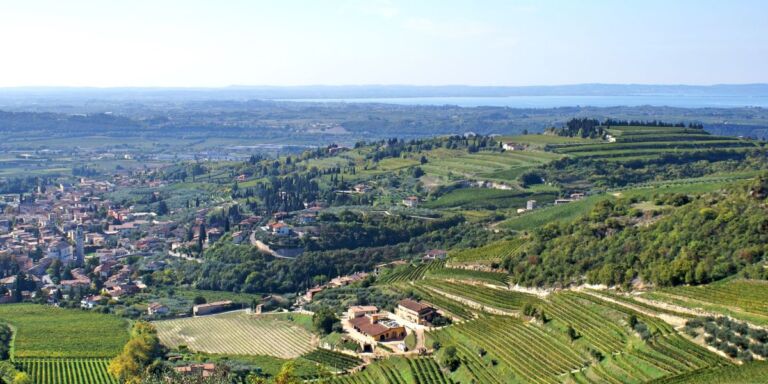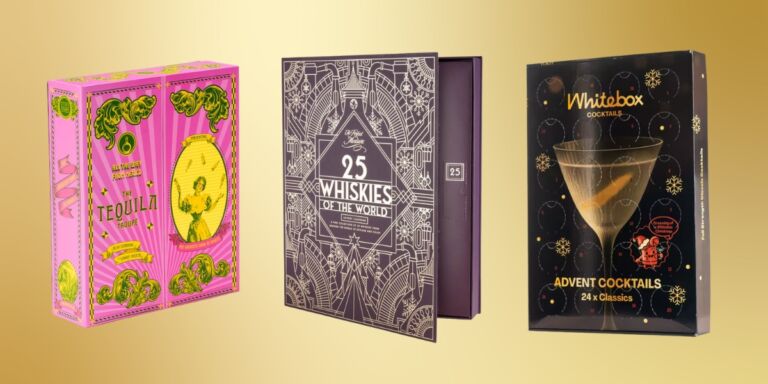THIS ARTICLE IS PART OF THE COLLECTION, THE NEW HOME OF OUR PREMIUM CONTENT. SIGN UP FOR FREE HERE.
A visit to Bodega y Cavas de Weinert in Luján de Cuyo is like stepping back into a bygone age. Its cellars are the closest thing Argentina has to those of López de Heredia, the defiantly traditional Spanish bodega in Rioja. Weinert, too, specialises in long-lived reds that slumber for decades in old wooden foudres. The place smells of the unhurried procession of time.
On my previous, pre-pandemic tour, I was lucky enough to taste a 1983 Cavas de Weinert, made by legendary winemaker Don Raúl de la Mota. Apart from the stunning quality of the wine, I was struck by its alcohol level – 13%, which was normal then but would have been considered underripe even five years ago. The wine was fresh, balanced and gloriously alive as it approached its 40th birthday.

Well-cellared old reds like this are surprisingly rare in South America. I’ve had impressively venerable bottles from bodegas López and Norton in Mendoza and Cousiño Macul and Santa Rita in the Maipo Valley, but those were exceptions. The image of both Argentinian and Chilean wines, especially beyond their borders, is that they are reds that don’t age particularly well. There’s plenty of sound and fury, but the clamour dies to a whisper much faster than you’d like as primary aromas and flavours segue into tired tertiary ones within a few short years.
That’s the perception, as I say, and there’s some truth in it. But that’s only part of the tale. Over the past decade, there’s been a dramatic shift in the styles of many of the best reds from these Andean neighbours. There are, as we shall see, several reasons for this, including the development of new areas; the rediscovery or resurrection of old ones; the emergence of a talented generation of winemakers, many of whom have visited the classic regions of Europe; better viticulture, including earlier picking; and less reliance on oak and corrective oenology. These more modern wines reflect their terroirs. It’s still early days, but they are also ageing far more gracefully than their predecessors.
The top South American wines are in global demand – and that demand is growing
It is significant that some of them are now sold through the Place de Bordeaux – traded alongside the great crus classés and snapped up by collectors around the world. The top South American wines from the likes of Almaviva, Catena Zapata, Cheval des Andes, Concha y Toro, Errázuriz, PerSe and Zuccardi are in global demand. If anything, that demand is growing. Chile had what many people regard as its best-ever vintage in 2018, matched by a similarly great harvest in Argentina in 2019.
It’s tricky to generalise about two countries with such far-flung vineyards – Chile’s cover a stretch of 3,795km from north to south – but I think it’s justified in this instance. The former was described by Aurelio Montes Jr as ‘elegant, fresh and balanced, as close to perfection as I’ve seen’, while the latter impressed Sebastián Zuccardi as ‘the best of my career so far. It was cool and dry and the maturation of the grapes was slow. You could choose your ideal picking date – and that’s not always the case in our desert conditions.’
What’s happening now in both Chile and Argentina is, in many ways, a reaction to what occurred in the 1990s and 2000s. Think of those two decades as a necessary rite of passage, something without which neither country would be where it is now. Both opened up to the outside world after the end of their respective dictatorships in the 1980s and the return of democracy. Investment arrived from overseas, and so did consultant winemakers. The globe-trotting oenologists included Alberto Antonini, Roberto Cipresso, Paul Hobbs, Jacques Lurton, Attilio Pagli and Michel Rolland, all of whom, at least at first, focused to varying degrees on lower yields, riper grapes, new oak, added acidity and the elimination of faults in the winery. Hobbs got his workers to wear T-shirts bearing the words ‘Anti-Oxidation Crew’ when he started at Catena.
These outsiders helped both countries to clean up their acts. And by making wines that were more international in style, fitting the recipe dictated by certain influential critics, they helped bring South American red wines to global attention. This was mostly a positive thing – and was certainly seen as being so at the time. But with hindsight it also had a downside.
‘Until 1990,’ comments Marcelo Papa from Concha y Toro, ‘Chile was making wines with 12.5–13% alcohol. Suddenly, we started picking later and producing reds with 14% or more, and high pHs. Between 1997 and 2000, the industry developed a problem with Brettanomyces.’ This disappeared in subsequent vintages because of better cellar hygiene, but many people continued – and still continue – to make richer styles, confusing intensity with balance. Very few of these wines have aged well.


There were always exceptions to the more powerful paradigm, produced by people like Álvaro Espinoza at Viña Carmen and then Coyam, but a real change of style started around 2010 and was mostly driven by a new generation of local winemakers in Chile and Argentina. In some cases, they simply came to realise that they weren’t enjoying drinking their own wines; in others, it was study trips to Europe that changed their minds. ‘I decided I wanted to resume our culture,’ says Marcelo Retamal of Viñedos de Alcohuaz, ‘to go back to where we left off in the early 1990s.’
Retamal is one of the key figures in the new Chile, alongside the likes of Francisco Baettig of Errázuriz, who picks his icon wines Don Maximiano, Seña and Viñedo Chadwick a month earlier than he used to; Leo Erazo of A Los Viñateros Bravos; Pedro Parra; Julio Bouchon and Christian Sepúlveda of Bouchon; Rafael Tirado of Laberinto; Felipe Müller of Tabalí; and Viviana Navarrete of Viña Leyda.
In Argentina, an equivalent, if similarly selective list would include the four Michelini brothers and Andrea Mufatto; Edy del Popolo and David Bonomi of PerSe; Sebastián Zuccardi; Alejandro Vigil of Catena Zapata and El Enemigo; Alejandro Sejanovich, who has more wine projects than I have fingers; Matías Riccitelli of Riccitelli Wines; and the Durigutti brothers, Hector and Pablo.

The fresher, better-balanced and, I believe, more ageworthy wines they are making are produced from a range of grape varieties. In Chile, the red Bordeaux varieties make most of the top wines, but there’s much greater focus on ‘Mediterranean’ grapes like Carignan, Cinsault and even País, as well as Garnacha, Pinot Noir and Syrah.
On the other side of the Andes, Malbec is responsible for a disproportionate number of the most ageworthy reds – quite something when you realise that the grape didn’t come back into fashion until the late 1990s – but Cabernet Franc, either alone or blended with other things, is increasingly significant. Here, too, the Bordeaux blends can be exceptional. There’s a good reason why châteaux Cheval Blanc and Lafite are involved with Cheval des Andes and Caro, respectively.


New areas that grow grapes with more natural acidity have had a hand in creating longer-lived wines, too. Over the past 20 years, Chile has developed significant vineyards closer to the Pacific Ocean, while both Argentina and Chile have moved to the cooler south and higher into the Andes.
Regions or subregions such as Cachi, Chubut, Gualtallary, La Carrera, the Quebrada de San Lucas and Uspallata in Argentina, and Alcohuaz, Colbún, Huasco, Leyda, Limarí, Malleco and Paredones in Chile, are all comparatively recent creations, while older ones such as Bío Bío, Itata and La Consulta are enjoying a renaissance. Some of them have benefited from higher rainfall or lower growing-season temperatures, while others have profited from drip irrigation, a technique that arrived as recently as the mid-1990s from Israel and has made it possible to grow grapes on slopes in areas where dry-farmed vines would struggle to survive.
Will any of the resulting wines age as well as my bottle of 1983 Cavas de Weinert? Nobody really knows. The changes that I’ve outlined in this piece began in earnest only a decade ago, so are still a work in progress. It’s quite possible that some of my favourite reds won’t stand the ruthless examination of time, but I fervently believe that they will. The number of top reds – and the enormous range of styles they cover – is greater than it has ever been. And for now, most of them are comparative bargains. What’s not to like about that?








